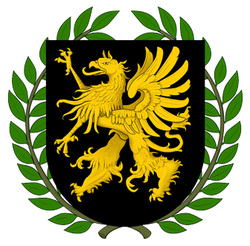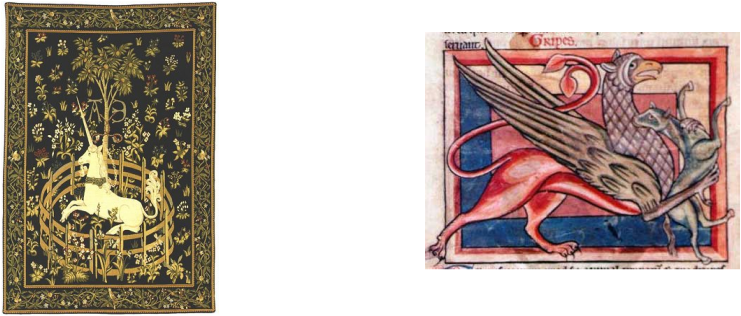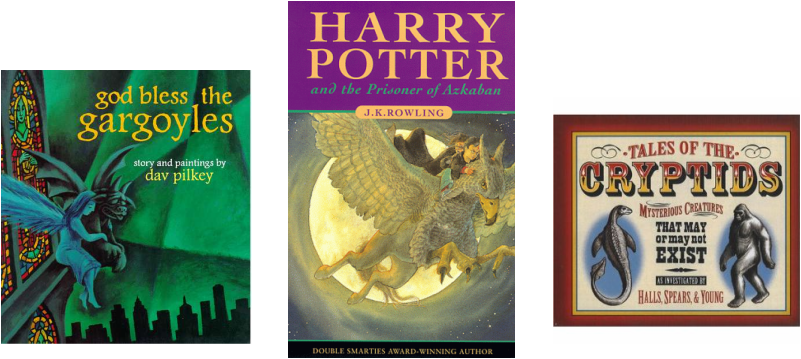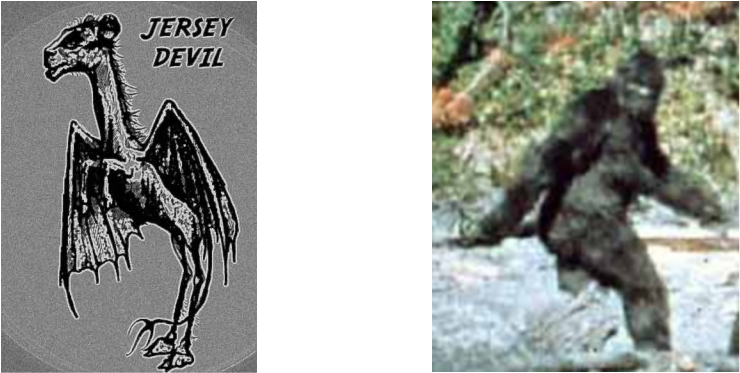Past

Medieval beasts played a major part in the development of Medieval societies. These creatures were the foundation of Middle Ages history. Medieval people carved stone creatures, or gargoyles, into castles, cathedrals, and buildings. They were also proved to be used as water spouts in ancient times. Other Medieval creatures, such as griffins, hippogriffs, and wiverns, appeared in artwork. Griffins and wyverns represent fierce and noble beings, so they were features on coat of arms, castle heraldry, and tapestries. They were used to symbolize certain families and castle communities. Knights wore their coat of arms and shields when they went into battle, showing the creatures' designs to other knights. Artists also painted their visions of these creatures, and writers began to compose legends and myths. The Medieval people took advantage of these stories much like the Romans and the Greeks. They loved hearing a great story! As a result, the myths seemed real to the people who heard them. They opened their minds to the possible realms that could exist beyond their homes. The Middle Ages was definitely affected by the influence their beasts had on them.
Present
Medieval beasts had a huge impact on our present-day society. We have adopted these creatures over time, and have used them in many forms of entertainment. For example, many books were written about the wonders in Medieval mythology. A book called God Bless the Gargoyles was written by Dav Pilkey, and it features the Medieval stone statues that sit atop their perches on buildings. Another novel that includes Medieval creatures is Harry Potter and the Prisoner of Azkaban. It introduces Buckbeak, the groundskeeper's loyal pet hippogriff. J.K Rowling also shows us Dumbledore's magical pet phoenix. His name is Fawkes, and he has beautiful red plumage and dazzling phoenix songs that mezmerize all who surround it. Although they are the number one source of Medieval animals, these creatures appear on more things than books. These mythical cryptids are also used to represent schools. For example, a griffin is a commonly used high school mascot. A griffin represents Village Elementary's griffin pride and loyalty as a united group of students. Like the people in the Middle Ages, Americans continue to search for such legendary cryptids and magical beings. Our suspicions include Bigfoot, the N.J. Devil, the Yeti, and the Chupacabra. The people of Scotland are still searching for the Loch Ness Monster, a dragon-like sea monster that looms in the murky depths of the Loch Ness. Although our cryptids are different, both us and the Medieval people intended to seek out creatures of a different realm.
Future
Although it might seem unlikely, Medieval beasts will make a difference to our future as well. During this present time, scientists continue to study cryptozoology, or the study of cryptids. They have been searching for legendary monsters such as Bigfoot and the Chupacabra for many years. In the future, however, this research may change. The influence Medieval creatures have on us may no longer take effect. With such advanced technology, cryptozoologists may be albe to prove that such natural disasters do not exist. They will have the devices and computers to search for these beings, resulting in real proof about their false origin. Or maybe people will be able to find out if cryptids really do exist. The high-tech cameras and electronics we will have should be able to look at evidence left behind from these monsters, and we will finally have a theory about their existence. The future holds many wonders that cannot be revealed until it is time. In a matter of years, scientists might truly answer the question that people have asked for years: Do cryptids really exist on our planet?



